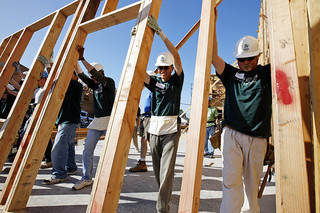
We measured an experiential marketing program that activated at volunteer events across the country for a brand of over-the-counter (OTC) medication. The client was relying on us to provide actionable insights from the research to use in their plan for 2015. We surveyed consumers at the events to measure the impact of the event experience and calculated the program’s return-on-investment (ROI). Oddly, the consumer insights and the ROI seemed to indicate different conclusions.
Because getting a strong sampling of consumers was important, we recommended a target number of surveys to collect at each event.
It’s helpful to clients to provide a target number of surveys to collect in the field. That way, they have a baseline to judge how well data collection is going. Despite some early struggles at small volunteer events, the field staff collected close to 500 surveys for the mid-program recap.
How consumer insights indicated which types of events generated the most impact
One of the assumptions made at program launch was that consumer intent to use the brand in the future at small and mid-sized volunteer events would be greater than at large events, because the smaller volume of consumers provide more frequent opportunities for more robust interactions.
The data verified this assumption. Consumers surveyed at mid-sized events (83%) were significantly more likely than those at large events (74%) to use the product in the future.
This was only a nine percentage point difference, but it suggested that the smaller events provided better opportunities to educate consumers on the brand, while larger events with higher attendance may be more challenging due to constraints on time and staffing.
So the recommendation was clear, right? The team should consider activating at more mid-sized events in 2015 to maximize future brand usage. Well, the estimated ROI threw us a curveball.
How Event ROI indicated which types of events generated the most impact
Consumer interactions are a key component of our event ROI model. All else being equal, ROI always increases with the number of interactions.
Large events had more than three times as many consumer interactions as the mid-sized events (19,170 vs. 5,755, respectively).
As it turned out, projecting event ROI out two years estimated a positive return at large events (118%), while mid-sized events were in the red (49%). Remember, fewer consumers surveyed at large events said they would use the brand in the future compared to mid-sized events. The nine percentage point difference in future usage was not enough to make up the difference.
So what was the recommendation?
The solution was to split our recommendation based on the client’s preferences.
- If the goal is to generate impact through in-depth consumer engagements, then it would be worthwhile to consider activating at more mid-size events.
- If the goal is to maximize consumer engagement opportunities for a higher return, then it was recommended to activate at more large events.
The event program recap provided enough insights and evidence to support both strategies for 2015. It will be interesting to learn in which direction the program goes next year.
Photo Source: https://www.flickr.com/photos/sandialabs/
